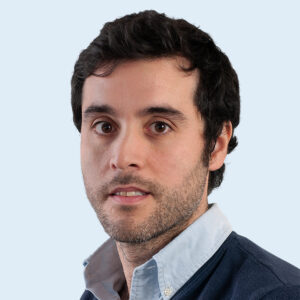When done best, digital transformation doesn’t represent a total departure from physical interaction but rather an extension of real-world exchange, enhancing face-to-face conversation. At times when physical interaction becomes difficult – such as with COVID-19 – a hybrid customer journey that combines different digital touchpoints can work to create a winning customer experience. With 50% of consumers expecting the pandemic to impact their finances for more than four months, it’s especially important that banks rise to meet new customer needs with digital banking solutions.
Different customers with different needs
Different digital tools can be used together to deliver a seamless, productive, and enjoyable banking experience. No single tool is the answer. Rather, it is in their combined use that these solutions achieve success, fulfilling different customer needs at different times.
These tools are diverse. There are automated solutions, such as chatbots, that provide prompt advice to customers 24/7 in the intuitive form of a conversation. Live chat and secure text messaging connect customers with advisors in a convenient manner, allowing them to discuss problems with minimum hassle.
The popularity of video chat has rocketed with global lockdown. But relying on video alone to deliver customer support ignores other powerful conversational tools that can enhance customer service with an omnichannel experience. Messaging solutions are a convenient way to connect. Automated chat tools improve efficiency and speed. And features like co-browsing add a collaborative dimension to the exchange, introducing a visual context that puts advisor and customer on the same page.
Digital banking transformation benefits
Digital banking tools don’t just improve life for the customer. They also ease the workload of advisors. For example, in-branch interactions often include a certain amount of small talk. Digital interactions are more streamlined; the virtual context encourages both parties to get to the point faster. This saves everyone time, while the option to meet face-to-face is still there if necessary.
Saving time is just one benefit of digital transformation. Banks also witness reduced support costs – as problems are resolved faster, and advisors can also delegate work to chatbots. Advisors also experience less repeat problems as tools like co-browsing enable customers to learn how to solve issues themselves, rather than resorting immediately to support channels. A more streamlined customer experience increases conversions and reduces drop-offs. And, of course, this boosts satisfaction and loyalty.
But throughout this transformation, the customer experience remains front and center. Digital tools allow banks to adjust their approach according to the customer’s unique needs. They offer a level of flexibility that allows the service to be configured to specific customer pain points at a particular time. The experience is personalized and human, allowing banks to build that all-important trust with clients.
In short, digital transformation isn’t just about automating processes and going virtual. It’s about offering customers a choice and allowing banks the flexibility to adapt to changing circumstances. Digital tools enhance traditional conversation with solutions that make exchange more efficient and more productive, providing customers with different options according to their unique needs – and all the while prioritizing human connection.
Digital banking and Unblu
Unblu’s conversational banking tools allow banks to connect with customers in a personalized and seamless way. Take your interactions to the next level with solutions that create more opportunities for meaningful conversation.
Learn more by booking a demo here and one of Unblu’s team members will be in contact to see how we can help you boost your customer service.




 Interaction Management Hub
Interaction Management Hub Secure Messenger
Secure Messenger Video & Voice
Video & Voice



